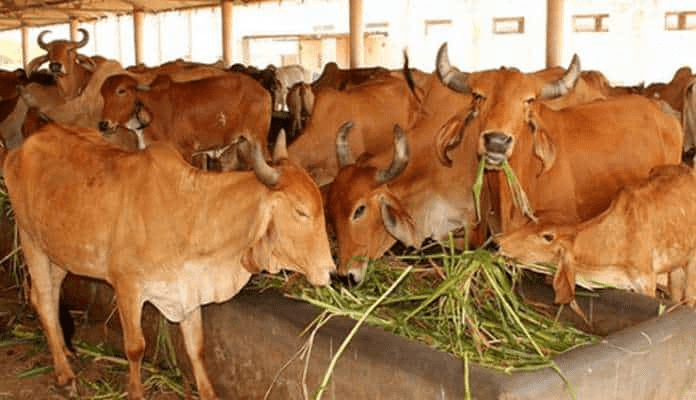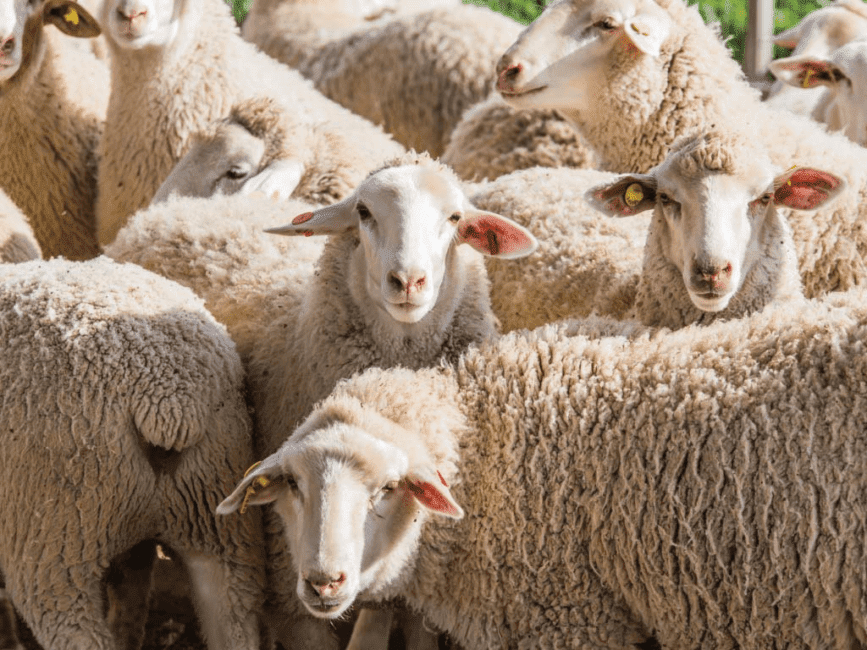There are certain factors to consider when purchasing ruminant animals and below are some of the things you should look out for in a ruminant animal before purchasing them.
When you want to purchase a male ruminant for instance, the general health status of the animal must be critically examined. The animals must be free of ectoparasites and any physical deformity.
Ruminants with any sign of ill-health must not be bought. For male check the testicles to be sure you are not buying a castrated animal. The animal must have well developed muscles and hind limbs so as to make mounting of female animal easy.
For the female, take proper reproductive rate of the parents, reproductive interval, incidence of abortion or any related reproductive problem etc. in general, it is better an expert is carried along before any selection is done so as to avoid unnecessary problems.
Observing the animals is most important in order to make sure that producers can recognize abnormality if any is present. Extension professionals working with these producers should have the experience to help them on how to observe the animals’ behavior, walking, feeding, temperament, and appearance.
Additionally, observing the hair coat, eyes, nose, feet, stomach, genitals, hooves, horns, tail, head, and back is important. For females, producers should observe the udder and number of teats present, because the animals have to produce milk for the kids.
Lameness is a common problem in goats and sheep that may result from excess moisture from rain that caused flooding of areas, including the sheds where fecal matter is present.
Animals that are unable to walk around the pastures and feed normally will experience weight loss, because goats and sheep love to browse and graze the pastures and will not get enough to eat
Read Also: Agribusiness: More Ways to Earn a Living from Farming Minus Land
Methods of Ruminant Animals Selection
The major methods of ruminant animals selection include the following;
1. Mass selection – Animals with superior characteristics (highly heritable breeds) are selected from a herd and then allowed to mate among each other at random.
The offsprings will show higher performance than their parents. This is because mass selection increases the occurrence of the desirable genes in a population.
2. Progeny testing – is a offspring resulting from selected parents ( Family selection). In this method a group of progenies (offspring’s) are used as an aid to increase accuracy in the selection of a breeding stock.
This is method is used when the character to be selected is of low heritability and expressed by one sex only. This method takes up to nine years for the results to be seen.
3. Contemporary comparison: Contemporaries refers to other heifers in the herd sired by the same bull. This is a progeny tasting method which involves comparison of average production of daughters (Heifers) of each bull with that of the other heifer referred to as contemporaries. In this methods it is assumed that the difference between the herds of the same breed are non-genetic in origin.
Advantages
- It is possible to compare heifers of different ages in different locations worldwide.
- It eliminates difference brought about by the environment.
- it is possible to make direct comparison of stut bulls at different artificial insemiation centres.
- It is accurate since we are using a large herd of animals.
Selection of Ruminant Animals Breeding Stock
Selection is used as a tool for livestock improvement. A breeding stock is a group of males and females which act as parents of future generations.
Selection is the process of allowing certain animals to be parents of future generations while culling others.
Culling is the removal of animals which do not perform to the desired level, from the herd. The animals retained have certain desirable characteristics which make them produce more.
Selected animals make up the breeding stock. The breeding stock should pass the good qualities to their offspring for better performance, to improve the livestock.
Selection process repeated for many generations increases chances of formation of desirable qualities in an animal.
Genetically termed as gene frequency(occurrence of the genes that carry desirable characteristics.) Selection increases occurrence of desirable genes and decreases occurance of undesirable genes.
During selection, the characteristics to be selected for are first studied closely to ascertain that it is not influenced by the environment, but mainly by the genetic make-up.
Selection helps improve characteristics which are highly heritable. Heritability means the likelihood of a particular trait to be transmitted to the offspring and they are strongly inherited.
A character like milk yield is lowly heritable, i.e. it is weakly inherited and a bigger percentage of the character is affected by the environment.
The degree to which selection affects a character depends on the following factors; the heritability of the character, the intensity with which the selection is done and the interval between generations and the kind of selection being practiced.
Read Also: Risks in Purchasing a Pregnant Cow
Factors To Consider When Selecting A Breeding Stock

- Age.
- Level of performance.
- Physical Fitness.
- Health.
- Body Conformation.
- Temperament or Behavior.
- Quality of products.
- Mothering Ability.
- Adaptability.
- Prolificacy.
Age;
- Young animals.
- Those that have not parturated for more than 3-times, should be selected.
- They have a longer productive life.
- Old animals are poor breeders and low producers.
- Production and breeding efficiency decline with age.
Level of performance;
- Animals with highest production level selected.
- Performance best indicated by records.
Good performance of animal indicated by;
- High milk, wool and egg production.
- Good mothering ability.
- High prepotency which is the ability of a parent to pass good qualities to their offspring’s.
- The animals with poor performance should be culled.
- Good records kept and used by the farmer for this purpose.
Physical Fitness;
Animals selected should be free from any physical defect e.g.
- Mono-eyed.
- Limping.
- Irregular number of teats.
- Scrotal hernia.
- Defective and weak backline.
Health;
- Sick animals do not breed well and are expensive to keep.
- Animals that are resistant to diseases pass these characteristics to their offspring’s.
Body Conformation;
- Animals for breeding to be selected according to proper body conformation.
- A dairy cow should be wedge-shaped with a large udder, thin legs, long neck.
Temperament or Behavior;
- Animals with bad behaviors should be culled. e.g. Cannibalism, egg eating, aggressiveness, kicking.
Quality of products;
- Select animals that give products of high quality such as meat, wool, eggs, milk.
Mothering Ability;
- Animals selected should have a good mothering ability.
- That is animals with good natural instinct towards their young ones.
- This will enable them to rear the young ones up to weaning.
Adaptability: Animals selected should be well adapted to the prevailing climatic condition in the area e.g. Ardi and semi arid areas.
Prolificacy;
- Animals selected should be highly prolific.
- That is, animals with the ability to give birth to many offsprings at a time(larger litter).
- This is a quality that should be considered when selecting pigs and rabbits.
- The ancestry records assist to choose the prolific breeds for mating.
Read Also: How to identify poisoned ruminant animals and how to tackle it
Selection of Cattle, Sheep, Goats, Pigs, and Camels

1. Selection in cattle
Consider the following when selecting cattle;
Level of performance which include;
- Milk yield butter content.
- Length of lactation period.
- Calving Intervals.
- Age of the animal.
- Fertility.
- Physical fitness.
- Health of the animal.
- Body conformation and suitability of the enterprise-milk or beef.
2. Selection in sheep
Consider the following;
Level of performance which includes;
- Mothering ability.
- Growth rate.
- Wool quality.
- Carcass quality.
- Twining rate Age.
- Suitability to the enterprise-wool or mutton.
- Flocking instinct Health of the animal.
- Physical fitness.
- Inheritable defects.
- Fertility.
- Inheritable defects.
- Fertility.
3. Selection in Goats
Consider the following in the selection process for goats:
- Fertility.
- Mothering ability.
- Growth rate.
- Twining rate
- Carcass quality/dressing percentage.
- Growth rate.
- Suitability to the enterprise – milk or mutton.
- Health of the animal.
- Age.
4. Selection in Pigs
Consider the following when making your selection in pigs:
- Carcass quality/dressing percentage.
- Suitability to the enterprise (bacon or pork).
- Growth rate.
- Health of the animal.
- Mothering ability.
- Prolificacy.
- Number of teats.
- Temperament.
- Body formation.
- Age.
- Heredity defects.
5. Selection in Camels
Consider the following when making your selection in camels;
- Health of the animal.
- Age.
- Temperament.
- Foraging ability.
- Fertility.
- Level of performance-milk, meat, fur and transport.
Read Also: List of Problems Confronting Livestock Production
